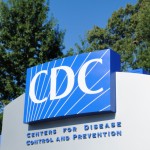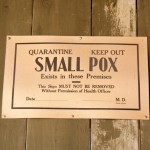The Center for Disease Control and Prevention, AKA the CDC, America's central medical laboratory has recently had multiple problematic episodes. I was trying to follow up on the vials of smallpox virus that were found in an old refrigerator that the FDA apparently had forgotten, The question, of course, was whether the virus samples were long dead or still viable. They had been sent to the CDC to have that highly significant issue resolved.
Since then there has been a followup announcement, but also several articles on significant issues with procedures and safety at the CDC itself. The first was published in The New York Times, AKA NYT, (as well as in other papers, but I get the NYT daily on my iPad , so saw it there first). The startling title was "C.D.C. Closes Anthrax and Flu Labs after Accidents." The current director of the CDC, Dr. Thomas Frieden, called the lab/agency "the reference laboratory to the world," but admitted there had been a series of accidents (actually lapses in set safety procedures), in the recent past, that were quite frightening.
A month ago potentially infectious samples of anthrax, a bacteria found naturally in soil and commonly affecting wild and domesticated animals worldwide, causing an extremely serious, but rare illness in people, were sent to labs that were not equipped to deal with them (anthrax would normally be handled only with the highest level of protective biosafety gear and procedures (BSL-4). The CDC also has a rather simplistic YouTube video discussing anthrax's use as a potential bioterrorism weapon, but in this case 62 or more CDC employees were potentially exposed to the bacteria in the course of their work.
The good news is it appeared nobody was in danger; all those employees were given the anthrax vaccine and also begun on antibiotics. The background information available online says there has never been person to person spread of the disease.
It appears that it's exceedingly tough to get rid of anthrax in the environment; I'll go over the classic historical example of how careful government researchers have been with its spores..
In the 1940s, British scientists used a small Scottish island (Gruinard) for germ warfare research. That island, thoroughly contaminated with anthrax spores, remained off-limits for forty+ years before extraordinary efforts, begun in 1986, rendered it safe for ordinary use. The surface of the island was only 484 acres; it was sprayed with a herbicide, then all dead vegetation was burned off. Next 200 tons of formaldehyde solution was diluted in 2,000 tons of seawater and sprayed over the entire island. Perforated tubing was used to ensure that 50 liters of solution were applied to every square meter being treated.
Later the effectiveness of the decontamination process was assessed by taking two duplicate sets of soil samples. Each was tested at two major government labs. Anthrax spores were detected only in "small quantities in a few places." These specific areas were treated in July 1987, followed by further soil sampling in October 1987. No further traces of anthrax spores were found.
Blood samples from local rabbits were also tested for anthrax antibodies. No such antibodies were found.
Following these measures, a farmer grazed part of his flock of sheep on the island for six months. The sheep were inspected monthly by the District Veterinary Officer, and returned to the mainland in October 1987 in excellent condition.
On April 24, 1990, 4 years after the decontamination works had been completed, a Defense Minister visited the island and removed the safety signs, indicating that the island had finally been rendered safe. Then, per agreement the island was sold back to the heirs of the original owner for the WWII sale price of £500.
But a senior British archeologist said he still wouldn't set foot on the island; he was concerned because of potentially infectious particles found in some of his digs.
Yet another NYT piece, "Ticking Viral Bombs, Left in Boxes," this one written by a distinguished physician, Lawrence K. Altman, M.D. recalls the irony of the outcry for mass smallpox vaccination of our entire U.S. population after 9-11 (when no Iraqi supply of the deadly bacterium was ever located), contrasted with the recent finding of six vials, two with live smallpox bugs, being found in in Bethesda, almost within "spitting distance" of our center of government.
In 2011 the Birmingham Mail reviewed a tragic lab accident which led to the last known smallpox death . The city, now England's second largest, was a site of a medical research laboratory associated with the local medical school. Viral particles got into an air duct and a photographer whose studio was one story up from the lab became the last known case of active smallpox and died from the disease in spite of having been vaccinated twelve years before
Dr. Altman discusses the pros and cons of eradicating the last two known stocks of the virus, one at the CDC, the other in a Russian lab in Siberia. Even if the natural virus is finally and totally eliminated , a rogue group may well be able to re-establish their own supply from the known genetic sequence of smallpox.
Lastly I saw a NYT article with an even more disturbing title, "After Lapses, C.D.C. Admits a Lax Culture at Labs." CDC workers had somehow shipped a dangerous strain of avian influenza to a poultry research lab run by the Department of Agriculture. Known as H5N1, the virus had killed more than half of the 650 people who had been infected with it since 2003. Again there were no deaths from this mistake.
After all of this recent furor plus the historical examples, I'm heartily in favor of the idea that's been broached saying such dangerous organisms should be confined to a minimal number of labs and even those clearly need to tighten up their standards.




